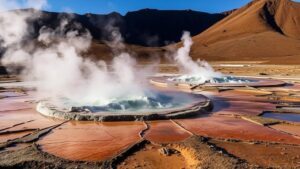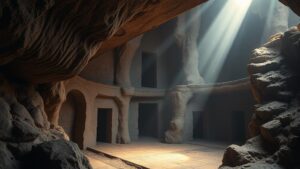Exploring newly exposed Arctic coastlines as melting ice reveals potential Viking settlements.
Exploring Newly Exposed Arctic Coastlines: Melting Ice Reveals Potential Viking Settlements
The Arctic, long considered a desolate and icy wilderness, is undergoing rapid changes due to climate change, particularly through the melting of sea ice. This phenomenon is revealing previously hidden coastlines and landscapes that may hold secrets of the past, including possible Viking settlements. As scientists, archaeologists, and historians converge to investigate these emerging areas, the findings could reshape our understanding of Viking exploration and habitation in the North Atlantic.
The Impact of Climate Change on Arctic Regions
Climate change is significantly impacting the Arctic region, with 2022 reporting a decline of nearly 14 percent in Arctic sea ice extent compared to the historical average from 1981 to 2010. National Snow and Ice Data Center noted that these changes are not just environmental, but also historical, as they expose secret landscapes long hidden beneath glaciers and permafrost.
The retreat of glaciers and melting permafrost has unveiled land that was previously thought to be unreachable or too inhospitable, prompting extensive research efforts to explore these newly accessible areas for archaeological evidence.
Viking Expeditions: A Brief Historical Overview
Vikings, originating from Scandinavia around the late 8th century, were notable for their advanced seafaring and exploration skills. Their expeditions took them across Europe, the Mediterranean, and even as far as North America. The most recognized Viking settlement in North America is LAnse aux Meadows in Newfoundland, Canada, which was established around A.D. 1000. But, historical accounts suggest that the Vikings likely explored much further north and west.
Legend has it that Norse explorers, such as Leif Erikson, ventured into Greenland and beyond, establishing connections in areas that remained largely obscured until recently. The discovery of new land due to the melting ice raises questions about where these voyages led and what settlements may have existed.
Recent Discoveries in the Arctic
In the past few years, researchers have reported several significant findings across Arctic coastlines, specifically in Greenland and parts of Canada. e regions, once encased in ice, are now revealing artifacts that suggest Viking presence.
- In 2019, archaeologists uncovered remnants of structures on the coast of Greenland that bear striking similarities to typical Norse longhouses.
- A collection of tools, including iron and bone artifacts, was discovered in Baffin Island, which hints at the potential for Viking interaction with Indigenous populations.
These discoveries are significant in demonstrating that Vikings may have exploited these areas for resources, indicating a broader geographic spread and social interaction than previously documented.
The Archaeological Process and Challenges
The task of excavating these Arctic sites comes with its own set of challenges. Climate conditions, harsh environments, and logistic constraints make research difficult, but technological advancements are aiding in these efforts. For example, aerial drone surveys and ground-penetrating radar are helping archaeologists map out sites without extensive disturbance to sensitive environments.
Plus, collaboration with local Indigenous communities is paramount, respecting cultural knowledge while enriching archaeological findings. This partnership fosters a more comprehensive understanding of the historical context of these newly exposed sites.
Future Implications for Viking Studies
As more sites are discovered and investigated, the implications for understanding Viking exploration will be profound. It could lead to:
- A reevaluation of historical Viking trade routes and communication networks.
- Insights into Norse interactions with Indigenous peoples, potentially altering narratives previously held.
- Increased awareness of the effects of climate change on archaeological sites, resulting in enhanced conservation efforts.
As researchers continue to explore the newly exposed Arctic coastlines, the potential for rich findings carries with it the responsibility of preserving a fragile heritage on the brink of disappearing again due to climate changes.
Conclusion: A New Chapter in Viking History
The melting ice of the Arctic not only serves as a stark reminder of climate change but also as a portal to a deeper understanding of human history. The potential Viking settlements revealed by this process underscore the importance of continued archaeological exploration in these areas. stories of exploration, adaptation, and interaction continue to unfold, promising to reshape our narratives about one of historys most enigmatic civilizations.
Understanding the implications of these findings can inspire future generations to appreciate both the resilience of past societies in adapting to their environments and the urgent need to protect our own planets fragile ecosystems.



